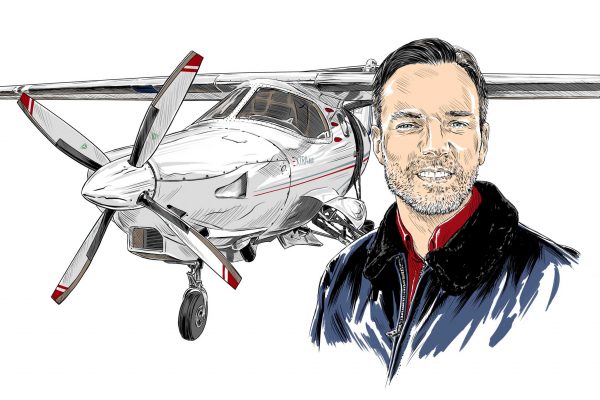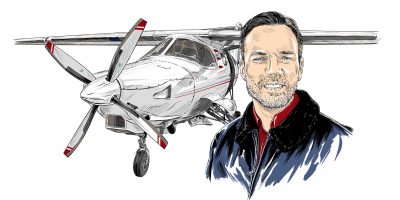Those of you who subscribe to the CAA’s Skywise updates may have recently had one entitled ‘Upcoming changes to aviation safety law’ appear in the inbox, with a link provided to something called the ‘Safety Policy and Legislation tracker’.
The tracker looks like a sort of UK equivalent to the Rulemaking area of the EASA website. While the UK was in the EU, the EASA rulemaking programme covered most rule changes, but there were still national amendments for the Air Navigation Order and other non-EU legislation, and these would sometimes be a bit lost in the flow of notifications we’re subjected to. So now having all the major legislative changes listed in one place is helpful.
Looking down the list, there is a selection of routine amendments relating to ICAO initiatives, drones and even space related regulation (the CAA now being the formal regulator for UK space flight). There are a few GA related changes from 2021 as well, some of which we have covered before but worth reviewing again:
Continuation of the Instrument Rating (Restricted)
Readers will almost certainly recall that when the EASA Aircrew Regulation first came out all those years ago, it was possible that the UK IMC rating would have to end. A compromise was reached whereby EASA Member States were permitted to issue national instrument ratings under a special provision of the Aircrew Regulation, which led to the IMC rating being issued as the ‘Instrument Rating (Restricted)’ on Part-FCL licences. Under EASA this was time limited until 8 September 2021, but in June that date was removed from the UK Aircrew Regulation, so that the IR(R) can continue to be issued and used on Part-21 aircraft indefinitely.
It now seems the UK will not be adopting the ‘Basic Instrument Rating’, which has recently come into force in EASA member states and potentially offers a greater proportion of the privileges of the full Instrument Rating, while keeping a GA focus. The CAA has stated reviewing the arrangements for instrument ratings more generally will form part of the wider licensing review, so watch this space.
Review of licensing
On 15 October an ‘Opinion’ document was published indicating that the date on which balloon and sailplane pilots will need a Part-FCL licence to fly Part-21 aircraft is to be further deferred until December 2023. The requirement for a Part-FCL licence is a hangover from EASA which continues as retained in UK law. While we were in EASA, it was repeatedly deferred for sailplanes and balloons, but this latest UK deferment suggests that rethinking it completely may be on the table. The rationale given for further deferral is the CAA/DfT intention to conduct a wide-ranging review of Flight Crew Licensing regulations. This is positive news, although at the time of writing the scope and timeline remains unknown.
Pilot medical declarations
January and additionally July saw amendments to the UK Aircrew Regulation and Air Navigation Order that make permanent the use of the pilot medical declaration (PMD) with a Part-FCL licence. You still need a Class 2 Medical for initial PPL issue, but the UK Part-MED regulation now allows the use of a Part-FCL PPL or LAPL with a medical declaration, albeit restricted to the privileges of the LAPL (VFR, aircraft not more than 2,000kg MTOW and not more than four people on board). There is still an exemption published regarding the wording of the ANO and the medical conditions under which it is possible to make a PMD, but hopefully this will be tidied up in a future amendment.
Use of national licences on Part-21 aircraft
This subject does not seem to be mentioned on the tracker, but it was part of a wider amendment that came into force in June and essentially renders UK licences issued under the ANO to be valid for Part-21 aircraft. To me it seems a somewhat complex amendment – the validation only extends for the SSEA, SEP and motor glider ratings and for flights conducted under the UK Part-NCO rules. While this probably captures 95% of the people who would want to fly Part-21 aircraft with a national licence (for example an NPPL flying a PA28), it is not clear why such limitations were considered necessary.
600kg microlights
As reported earlier in the year, the potential for factory-built microlights with a 600kg MTOW is now with us. The technical detail has been well covered elsewhere, but suffice to say that the relevant ANO amendments came into force in August. It will be interesting to see how this develops. One point of note is that differences training with an instructor will be required for existing microlight pilots to go to the heavier aircraft (and indeed the other way, should that scenario occur). Some have also noticed that a requirement for differences training for special features such as variable pitch propellers, turbochargers or autopilots has now also been added for all microlights, which previously only applied to larger GA aircraft outside the microlight weight class (check with the British Microlight Aircraft Association for the full list if features requiring training).
More information
Safety Policy and Legislation tracker.




